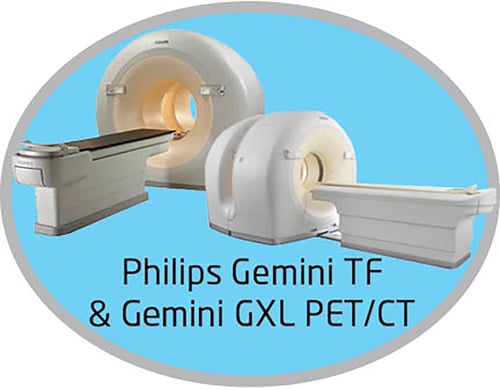Everyone likes to have the latest, greatest equipment for their medical imaging departments. However, it’s no secret that you can often get the performance you want for less money by purchasing medical imaging equipment through a secondary market. The challenge is that you’re usually too busy building a practice, serving patients or managing imaging departments to keep up with which PET/CT Scanners have become available on the secondary market. The medical imaging equipment experts at Atlantis Worldwide have put together this information about Philips PET/CT models available on the secondary market—and hopefully it will help you determine which is right for you.
often get the performance you want for less money by purchasing medical imaging equipment through a secondary market. The challenge is that you’re usually too busy building a practice, serving patients or managing imaging departments to keep up with which PET/CT Scanners have become available on the secondary market. The medical imaging equipment experts at Atlantis Worldwide have put together this information about Philips PET/CT models available on the secondary market—and hopefully it will help you determine which is right for you.
Comparing the Philips Gemini GXL and Gemini TF PET/CT Equipment
Let’s start with what they offer that’s the same:
- The Gemini GXL and Gemini TF both use the long-lasting MRC 600 X-ray tube. Impressively, they offer as many as 1.6 million scan seconds on these tubes.
- Both models are available with Brilliance 6 and 16 scanners as the CT portion of the scanner.
- CT parts are interchangeable between these models for maintenance purposes.
Here’s what’s different between the two models:
- Unlike the GXL, the Gemini TF systems are available in Brilliance 6, 16 AND 64.
- The Gemini TF has lutetium-based LYSO detectors instead of the gadolinium-based GSO detectors in the GXL. Lutetium-based LYSO detectors are now the industry standard across major OEMs. LYSO detectors also deliver a resolution and clarity advantage.
- The Gemini TF boasts time of flight technology, which offers higher image quality for more accurate detection of masses and lesions. This provides better information so it’s easier to provide a more definitive diagnosis and pursue a more specialized treatment plan.
Here’s the advantage of a Gemini GXL:
A Gemini GXL produces quality images and reliability. While the Gemini TF is better in almost every way, the GXL does win when it comes to your budget. It costs about $40K less to purchase than a TF, however service and installation/logistics costs are roughly identical.
Here’s the advantage of a Gemini TF:
TF stands for True Flight. Time of flight technology improves the system’s accuracy in locating targeted masses and allows for the use of lower doses and the detection of smaller lesions. Philips was the first to bring time of flight to market and is the only company that has had it available long enough for units with the feature to enter the secondary market. It’s important to note that not all Gemini TFs have time of flight, so make sure the system has it if it’s an important feature to you.
Talk To An Expert
The Gemini TF is hands-down the superior choice, although it will cost you more. Since it’s also the only time of flight system on the secondary market, the Philips Gemini TF is a wise choice.
If you’re looking for medical imaging equipment that can deliver high performance, great warranties and lower price points, a unit on the secondary market makes sense. Talk to the experts at Atlantis Worldwide for more information.
Follow Atlantis Worldwide on Twitter: @AtlantisLLC
Other blogs you may have missed:
- Is Your CT Tube About To Fail?
- It's All About CT Detectors
- CT Scanner Artifacts- How Do I Correct Streaks?
- Should your business lease or buy medical imaging equipment?
- Free CT Resources
Meet the author: Vikki Harmonay



